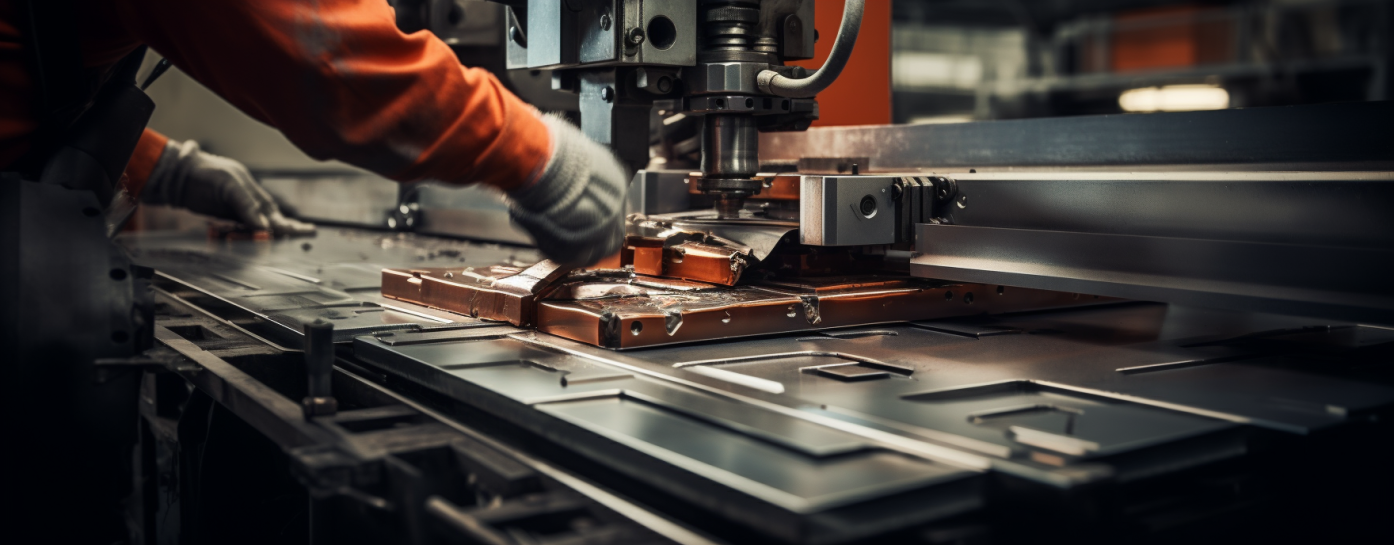In the world of sheet metal fabrication, bending emerges as a fundamental process that transforms flat metal sheets into three-dimensional components. This artful technique, performed with precision machinery and skilled craftsmanship, is integral to the creation of diverse products across industries. Let's explore the intricacies of sheet metal bending and its vital role in modern manufacturing.

Sheet metal bending involves the application of force to deform a metal sheet, altering its shape and creating angles or curves. The primary tool used for this process is a press brake, a machine that exerts controlled pressure on the sheet to achieve the desired bend. The accuracy of the bend is influenced by factors such as material thickness, tooling selection, and the design of the final component.
Press Brake:
The press brake is the central piece of machinery in sheet metal bending. It comprises a punch and a die, between which the metal sheet is positioned.
Press brakes come in various types, including mechanical, hydraulic, and servo-electric, each offering unique advantages in terms of force application and control.
Tooling:
Tooling refers to the punch and die components on the press brake. The punch descends into the die, forming the metal sheet into the desired shape.
Different tooling configurations are used to achieve various bends, ranging from simple V-shaped dies to more complex tool setups for intricate designs.
Versatility:
Sheet metal bending is remarkably versatile, accommodating the creation of a wide array of components with different shapes and angles.
This versatility makes it a crucial process in industries such as construction, automotive, and electronics.
Precise Geometry:
Bending allows for the precise formation of angles and curves, contributing to the dimensional accuracy of the final product.
This precision is essential for components where proper fit and alignment are critical.
Single and Multiple Bends:
Sheet metal bending can be employed for single bends or multiple bends in a single operation, providing flexibility in design and production.
This capability is advantageous in creating complex components like brackets and enclosures.
Consistency Across Production Runs:
With proper tooling and setup, sheet metal bending ensures consistent results across large production runs.
This reliability is crucial for maintaining quality standards in mass production scenarios.
Sheet metal bending finds application in numerous industries and products:
Automotive: Forming body panels, frames, and chassis components.
Construction: Crafting structural elements, brackets, and architectural features.
Electronics: Creating enclosures, brackets, and support structures for electronic devices.
Appliances: Forming panels and housings for household appliances.
Despite its advantages, sheet metal bending comes with challenges:
Material Springback: Some materials exhibit springback, meaning they partially return to their original shape after bending. Compensating for this is crucial for achieving accurate bends.
Tooling Wear: Continuous use of the press brake can lead to tooling wear, necessitating regular maintenance and replacement.
As manufacturing technologies advance, innovations in press brake automation, precision control systems, and adaptive tooling are likely to enhance the capabilities of sheet metal bending. Integration with digital design and simulation tools will further streamline the process, ensuring that sheet metal bending remains a cornerstone of precision manufacturing.